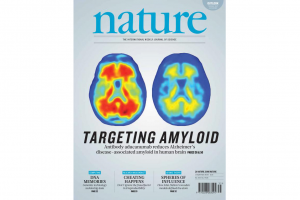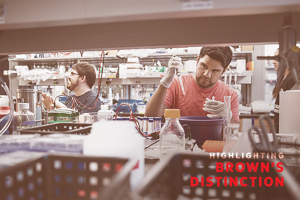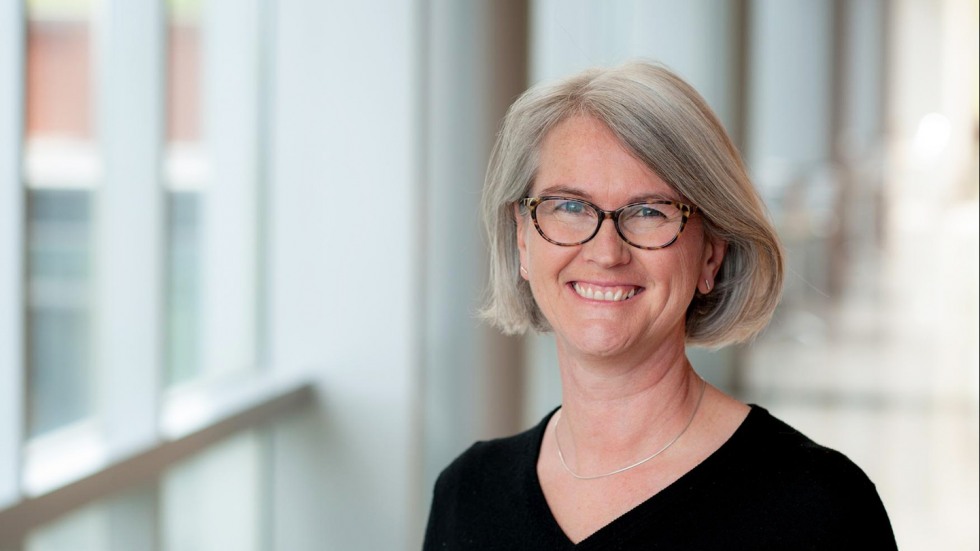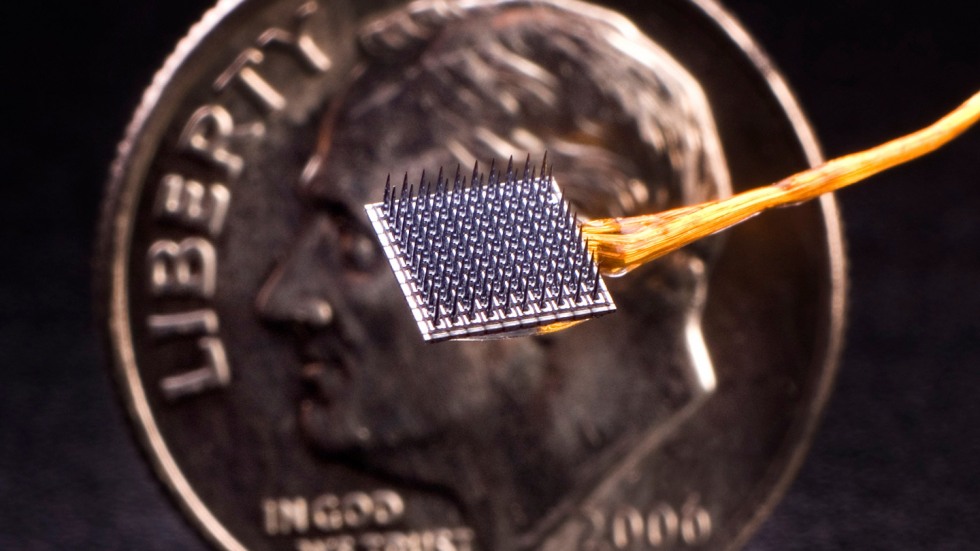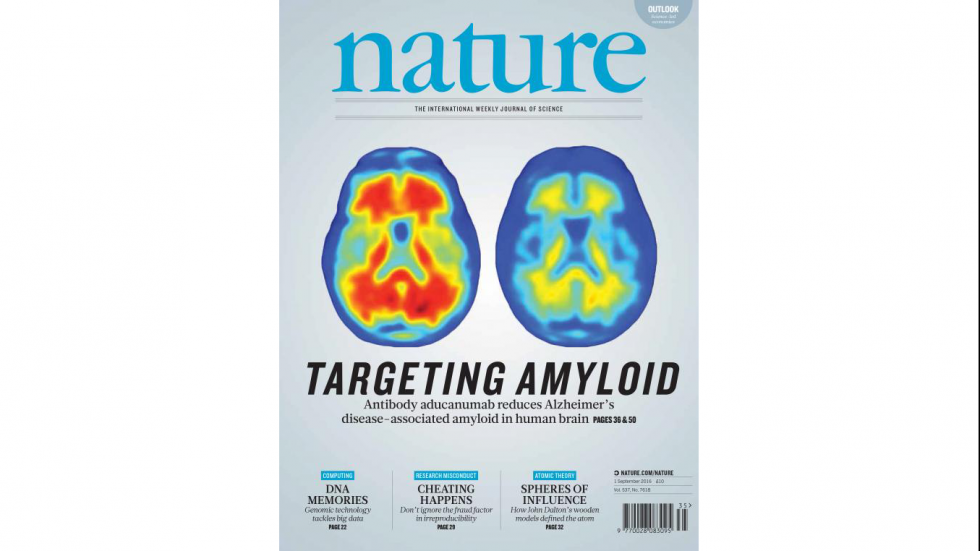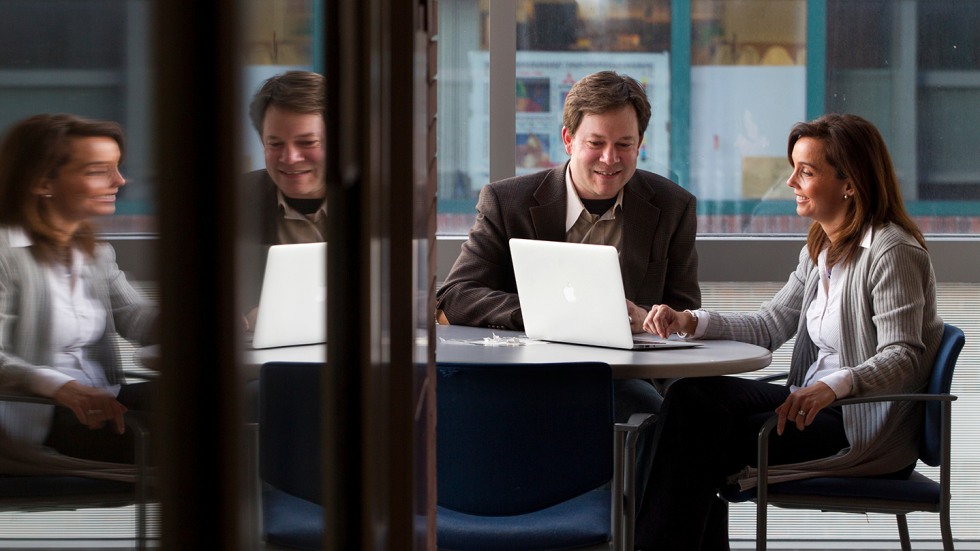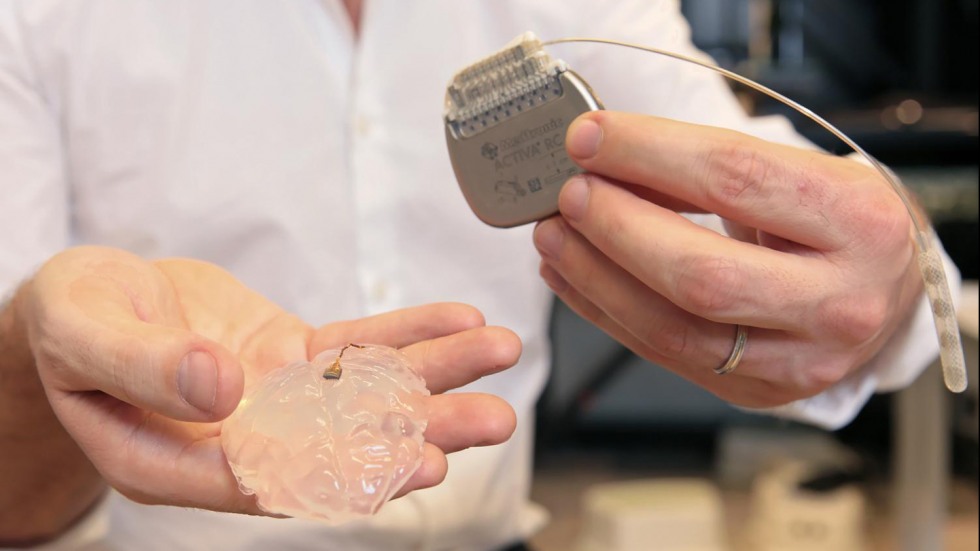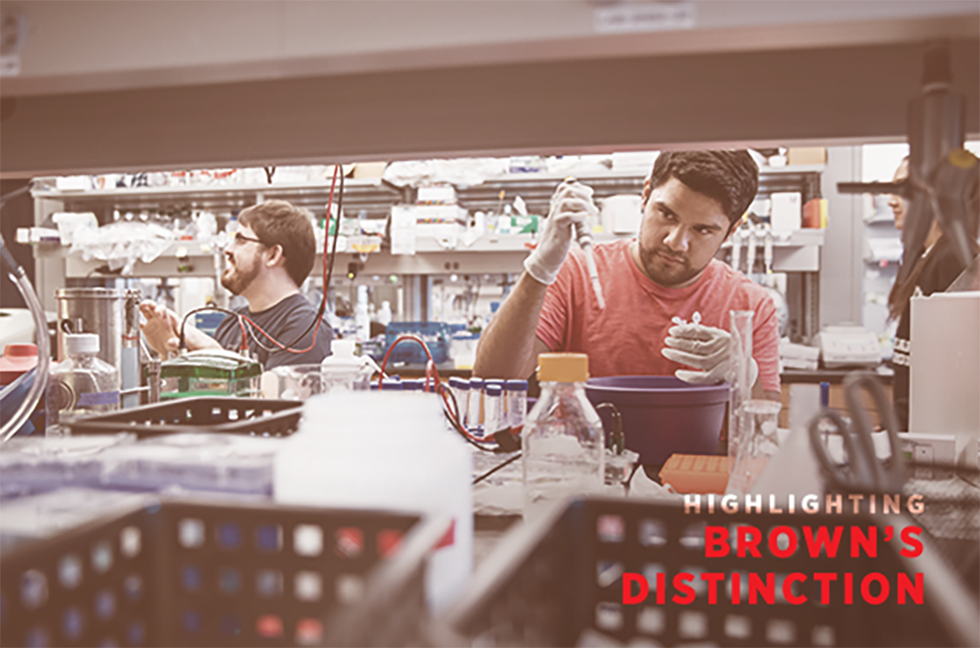
Nick Dentamaro / Brown University
PROVIDENCE, R.I. [Brown University] — Brain scientists at Brown have bold aspirations. Those aspirations may change our fundamental understanding of the human brain and also transform what’s possible for treating brain-related disorders and diseases.
“Sometimes in the intensive care unit, I meet people who just yesterday had a brain stem stroke or a spinal cord injury,” said Dr. Leigh Hochberg, professor of engineering at Brown, a critical care neurologist at Massachusetts General Hospital and director of the BrainGate brain-computer interface research team. “When that happens in the future, I want to be able to say to them: ‘We’re going to be able to restore your ability to move and your ability to communicate. And we’ll be able to do that tomorrow.’”
In Providence and across the world, neurologists, neuroscientists, engineers, computer scientists, mathematicians, psychologists and other researchers across the University are making a profoundly positive impact on the human condition.
And with vexing neurodegenerative diseases including ALS and Alzheimer’s affecting an aging population, and traumatic brain injuries erasing the ability to move or to speak, Brown’s impact will make a difference in the lives of millions. Brown University is gaining recognition for having some of the best scientists in the world to confront brain disorders.
“I really think that this is the moment we’ll look back on,” said Diane Lipscombe, a Brown professor of neuroscience who is also president of the international Society for Neuroscience. “The time is now. There is no time to wait. We have to make discoveries, and we have to understand some of the biggest challenges, and the biggest medical problems facing society today.”
Lipscombe directs Brown’s Carney Institute for Brain Science, a nexus of research across the University that is accelerating the pace of scientific discovery about the brain and helping to find cures for some of the world’s most devastating diseases. In April 2018, a $100 million gift from Brown alumnus Robert J. Carney and Nancy D. Carney changed the former Brown Institute for Brain Science’s name and established it as one of the best-endowed university brain institutes in the country. With up to 45 labs across campus engaged in research at any given time — and more than 130 affiliated professors in departments ranging from neurology and neurosurgery to engineering and computer science — the Carney Institute is establishing Brown’s pre-eminence for the study of the brain.
Since 2011, the institute’s core faculty members have led projects with more than $116 million in grant funding. It’s no accident that one quarter of all Brown undergraduates take Introduction to Neuroscience, reflecting the excitement in the field. Well-known strengths at Brown include solving the mysteries of the brain by innovating methods to locate, decipher and fix circuits in the nervous system. The University is also recognized for devising treatments and technologies to address neurological disease and injury.
Lipscombe said one of Brown’s strengths is its breadth of expertise to study the brain at all necessary scales —from genes to circuits to healthy behavior and psychiatric disorder. Equally important, the University’s researchers contribute the deep expertise at each of those scales required to produce insights and tools to see, map, understand and even fix problems in the nervous system.
“If you want to solve some of the big questions in brain science, the Carney Institute is the place to be,” she said. “By building on our strong foundation, our faculty, scientists and students are integrating knowledge from across the disciplines to develop treatments and technologies for improved quality of life.”
Brain-computer interfaces
For patients who have become severely paralyzed, Brown researchers pioneered the BrainGate brain-computer interface (BCI), which allows patients to control computer cursors or robotic arms just by thinking about moving their own arm and hand.
In the last two years alone, the multi-institution team testing BrainGate achieved a number of breakthroughs. The team published a study showing participants typing on an on-screen keyboard at record speed. Separately, it demonstrated that after connecting BrainGate with electrical stimulators in the arm of a man with paralysis, he could control the arm to feed himself. In November 2018, a new study detailed the experiences of three participants with tetraplegia who were able to operate a tablet computer just by thinking about making cursor movements.
Hochberg said the world-class expertise the Carney Institute’s researchers contribute across the academic disciplines is paramount in Brown’s ability to truly push the boundaries on brain science.
“To have that depth of expertise in neuroscience and engineering and applied mathematics and computer science, there are very few places in the world that can do that,” he said. “And we’re very lucky that we can do that here at Brown.”
Elsewhere in engineering, Assistant Professor David Borton is also researching spinal cord injury. Last year, Borton co-led a study showing that combining a wireless BCI system with spinal stimulation could help animals with a temporary spinal cord injury regain control of their legs.
As the Carney Institute’s researchers continue to test boundaries and innovate, Brown’s capacity for innovation in the brain sciences continues to attract major new grants.
The National Science Foundation, for example, awarded neuroscientist Christopher Moore $9.2 million to engineer ways for neurons to react to circuit malfunctions or disease states, and then to compensate for them by communicating with light. If successful, these efforts could revolutionize the ability of scientists to decipher, diagnose and treat diseases such as obsessive-compulsive disorder, epilepsy, stroke or traumatic brain injury.
Insights into mind, behavior and biology
Brown researchers are working to identify treatments and cures for some of the most widespread diseases affecting health. Professor Anne Hart discovered two key mechanisms underlying spinal muscular atrophy, a leading genetic cause of infant death.
In the area of Alzheimer’s and ALS research, Dr. Stephen Salloway co-authored a Nature paper showing significant reductions in harmful amyloid plaques in the brains of people who received the drug aducanumab. In separate research, Nicolas Fawzi showed how genetic mutations upset the behavior of a key protein in ALS and Alzheimer’s disease. Professor Kristi Wharton and Professor Robert Reenan’s labs also continued a landmark collaboration with three other Brown research groups in conducting an innovative search for rare genetic variations that may suppress ALS.
The study of neurodegenerative diseases is an area in which Brown is poised for further breakthroughs, Lipscombe said.
“The general challenge is that, despite 20 or 30 years of focused effort by pharmaceutical companies and labs, we still don’t know why neurons die in neurodegenerative disorders,” Lipscombe said. “ALS is part of a group of disorders that takes people’s lives way too early. We need more research into the basic mechanisms that lead to cell death.”
Brown brain scientists have also made innovative advances to address behavior and mood. Ivan Miller, a professor of psychiatry and human behavior, led a clinical trial showing that at-risk emergency department patients who received an intervention made 30 percent fewer suicide attempts than patients who received standard care.
To develop a novel treatment for stress or mood disorders, professors Takeo Watanabe and Yuka Sasaki demonstrated that by using MRI to read out brain patterns associated with how volunteers felt about faces they saw on a screen, the researchers could unconsciously change those feelings. And to fight addiction, molecular biology professor Julie Kauer and colleagues published a study explaining how stressful events can make people with cocaine addiction susceptible to relapse.
And Brown neuroscientists led key insights into fundamental nervous system function. David Berson published a discovery about how the mammalian retina is configured to track our own movement through space. Dima Amso showed for the first time that babies as young as eight months old can employ the prefrontal cortex to learn simple rules. And Moore and Stephanie Jones proposed a new theory of how beta waves emerge in the brain.
Jones said the ability for researchers and clinicians to team together at Brown offers the potential for innovative solutions that can ultimately transform the lives of patients.
“Researchers at Brown are passionate to discover new things,” Jones said. “There is a realization here that this requires the integration of different kinds of expertise. I can’t do something that’s clinically relevant without a clinician. And the clinician knows that they can’t discover something meaningful in neural circuits without someone who directly studies circuit-level dynamics.”
The final frontier
Lipscombe said major investments like the gift from the Carneys and a recent $12 million grant from the National Institutes of Health are the lifeblood to driving innovation and discovery. They set the stage for an even greater impact by Brown’s brain scientists in the decades to come, she said.
“This is a transformative moment that is going to catapult Brown and our brain science institute,” Lipscombe said. “We will be able to crack the neural codes, push discoveries forward and address some of the largest challenges facing humanity, at the same time training the next generation of brain scientists.”
Fully understanding the secrets of the brain and its relationship to cognition, behavior and disease is a challenge that Brown researchers are embracing head on, she added.
“To understand the human brain is, for me and for many of my colleagues, the final frontier,” Lipscombe said. “We’re in an incredible moment in time right now in brain science.”
